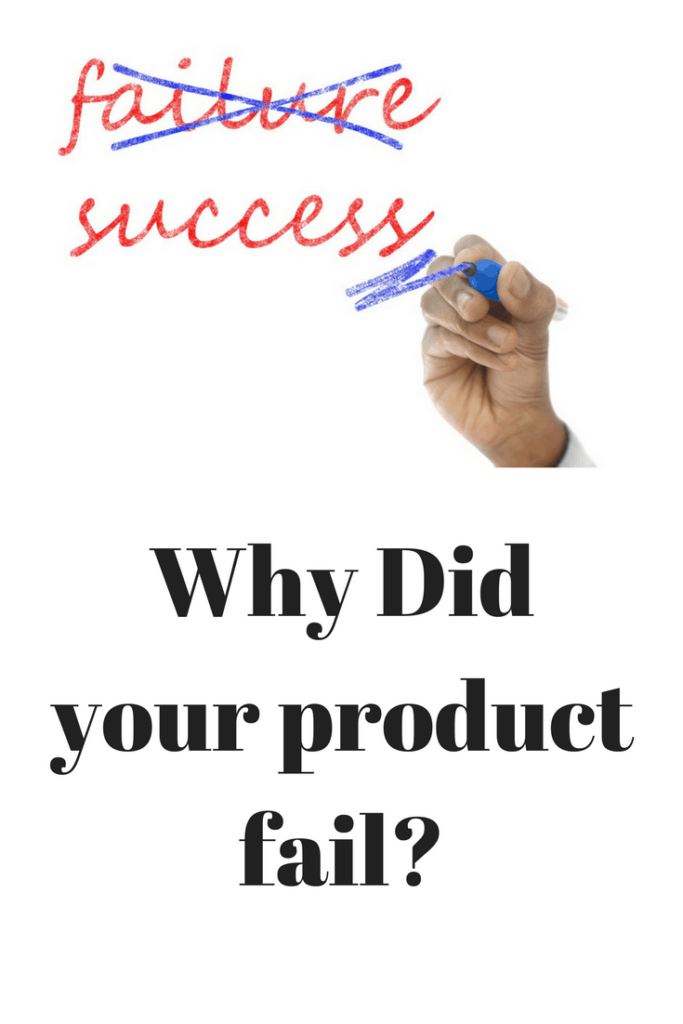Business is never smooth sailing, there will always be waves looking to rock the boat from time to time. You’re going to experience ups and downs, including a lot of failures along with your successes. The key is learning how to get yourself up from these failures. Everyone fails, but the truly successful people in life are the ones that learn from their mistakes, which helps them improve in the future.
There are plenty of failures you can see when running a business, but the biggest is when your product itself just doesn’t sell. You spend a lot of time developing it, put a lot of money into it, and then it just fails. No one buys it, people complain about it, and you end up taking a big fat loss for your troubles.
When this happens, it’s easy to beat yourself up and try to put the whole experience behind you. For some people, it’s enough to completely put them off the idea of running a business, and they give up. Instead of doing either of these things, you need to sit down, take a long hard look at things, and figure out why your product failed. This type of assessment or self-evaluation will help you understand your mistakes, meaning you can avoid them when you attempt to launch a new product in the future.
“Losing is a learning experience. It teaches you humility. It teaches you to work harder. It’s also a powerful motivator.” – Yogi Berra
— Success Quotes (@SuccessQU0TES) May 23, 2016
Naturally, this brings us to the question; why did your product fail? Usually, regardless of what product you’re selling, you can narrow down the shortcomings to one of the things mentioned below.
The Build-Quality Was Poor
A huge reason most products fail is that the build-quality was poor. Many companies make something, assuming the quality is good, but not taking into account the quality over time. Yes, your product may look nice when you make it, but how does it hold up against the test of time? You could sell something that seems good, but within a week the paintwork is chipped, things are defective, and the quality has just deteriorated.
As such, you need to look at what went wrong during the design and building process. The immediate thing that springs to mind is that you didn’t test the product for a long enough time. If you spend a long time testing it, you’ll have seen the quality decrease as the days and weeks passed. So, remember to do this next time.
Next, think about the way in which you actually created the product; what services did you use? Of course, it’s difficult to talk about all of them, as all products are different. But, we can think about common issues most products see with regards to quality. One that springs to mind is the colour or coating of a product. If you want to coat something in a color, you need to be assured that it won’t rub off or chip. This is such a common issue when it comes to products that just aren’t built well. Always do your research and look for the best and most durable option for your product. There are companies like Custom Wytelyne that provide powder coating for metal items, this is a good way of coloring things instead of using traditional paint that might chip off. But, it all depends on the type of product you have, some materials respond better to other coating methods. Just do more thorough research and find a method that guarantees the best results.
Shoddy paintwork or coating isn’t the only design defect that might let you down. Things like general durability may be the issue. If your product gets dropped on the floor and breaks right away, then that’s not really a good sign – if it’s a product people are supposed to use every day! A good example of this is with smartphones. People expect their phone to hold up to being dropped on the floor, as that’s a risk they face every day. If one breaks immediately, people get annoyed, and the product gets absolutely slammed, meaning other people shy away from it. Companies like Apple got loads of stick for their phone screens breaking, it damaged sales, and they had to improve their phones with better glass.
To sum up this point; you designed and built a product that was never going to last. You may have cut corners or not done the research to find the best materials, leading to problems down the line. Always test your products too, use them for a long time to see if problems occur after a few weeks or months. Learn from this mistake, and it will help you create a better product in the future.
You Got Your Marketing Plan Completely Wrong
Now, you may have read through that first point and thought it didn’t apply to you at all. You took a great deal of care designing your product, ensuring it was the highest quality known to man. You were so amazed by the build-quality, it looked like there was no chance your product would fail.
Unfortunately, your drawback could’ve been the way you marketed your product. Marketing is so important these days, regardless of how big or small your business is. Without marketing, we’d have no means of making people aware of what we sell. How do you know there’s a new coffee machine or tumble dryer for sale? Because you’ve seen adverts for them or been subjected to marketing material in some way, shape, or form.
Having said that, marketing your products is far more than simply buying adverts. You must have a proper plan thought out, including your target market. Who is your product aimed at? Ideally, you should know this as it forms the basis for your product idea itself! But, you need to know how to market your product to your target audience. The people you sell to will determine the type of adverts you buy, where they’re placed, etc. For example, if your product targets an elderly audience, you’re not likely to spend loads of time promoting on social media or the internet. Instead, a traditional approach like adverts at bus stations or in newspapers will be a good idea. Flip things on its head and assume your target audience is millennials, and you’ve got a completely different approach.
In summary; if you don’t figure out the right way to market your product to your target market, then it will fail. People won’t know it exists, meaning they won’t buy it. You could have the best item the world has ever seen, but the world is blind to it without a proper marketing plan backing it up. If you have some spare time on your hands, you can watch the video above this point for a few marketing plan pointers
It Cost Too Much
Expensive products are not always a problem. Many things in life have to be expensive. We’ve come to understand that a computer costs a lot of money to make, so it needs to be sold for a lot of money. Likewise, we know that a little candle holder is cheap to make, so it shouldn’t cost too much money.
The problem with your product is that it cost too much compared to the rest of the market. You’re charging a ridiculously high price, leading people to shun you and buy a cheaper product from a competitor. Why was it too expensive? Because it cost too much to completely make the product. This includes the cost of materials, labor, and marketing as well.
What you need to do is figure out the cost per item for your product. This will tell you exactly how much it costs to make one. In doing so, you can figure out how much to sell it for. If the cost per item is already coming out more expensive than similar products are being sold for, then you’ve got a problem. You can’t sell for less, or you’ll make a loss on every sale. So, you try and sell for more, hoping to make a profit. But, as I said, people ignore your overpriced item in favor of something far more affordable.
It’s a simple concept; your product cost too much to make, which means it sells for too much. Always do the market research to figure out how much you think your product should sell for. This will help you put a cap on production costs and stick to a budget. Work on reducing how much it costs to make your item, and you can sell it for a lower price, reeling in more of the market.
Having looked at these three points, you can see why a lot of products might fail. It could transpire that all three of these issues applied to your failed product, or it might have been one problem holding you back. The important thing is that you figure out what caused your shortcomings, you make a note of it, and you prepare for the future. Don’t be discouraged by your failures, use them to propel you to more success at a later date. Who knows, if you evaluate things, you might be able to come up with a better plan and release the same product – with more success – in the future.





I am really thankful that I came across this post. I will be able to use so many learnings in real life. Would like to read more content from you.